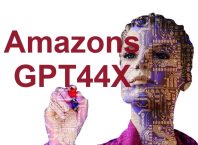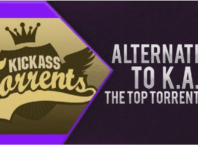In the ever-evolving landscape of digital technology, we’ve witnessed the birth and growth of cryptocurrencies like Bitcoin, powered by the groundbreaking technology of blockchain.
For those interested in engaging with this digital currency revolution, this Link offers a unique opportunity to explore and participate. As we continue to explore the possibilities of decentralized systems, one area that has gained prominence is decentralized cloud storage.
In this article, we will delve deep into the concept of decentralized cloud storage, focusing on Storj as a pioneering solution.
Contents
- 1 Understanding Bitcoin and Blockchain Technology
- 2 Decentralized Cloud Storage: An Emerging Need
- 3 Storj: The Pioneering Decentralized Cloud Storage Solution
- 4 Comparing Storj to Other Decentralized Cloud Storage Solutions
- 5 How to Get Started with Storj
- 6 The Future of Decentralized Cloud Storage
- 7 Conclusion
Understanding Bitcoin and Blockchain Technology
What is Bitcoin?
Bitcoin, the first cryptocurrency, emerged in 2009 under the pseudonym Satoshi Nakamoto. It functions as a digital form of currency, allowing peer-to-peer transactions without the need for intermediaries like banks. Transactions are recorded on a public ledger called the blockchain.
The Role of Blockchain in Bitcoin
The blockchain is the underlying technology of Bitcoin, serving as a distributed and immutable ledger. Each block on the blockchain contains a set of transactions, and these blocks are linked together, forming a chain. This technology ensures transparency and security, making it virtually impossible to alter past transactions.
Decentralized Cloud Storage: An Emerging Need
Challenges with Centralized Cloud Storage
Centralized cloud storage, offered by companies like Amazon Web Services (AWS) and Google Cloud, has been the go-to solution for data storage. However, it comes with inherent vulnerabilities, including data breaches, single points of failure, and control by a few powerful entities.
The Promise of Decentralization
Decentralized cloud storage addresses these concerns by distributing data across a network of nodes, reducing the risk of a single point of failure. Users can store and retrieve data securely without relying on a central authority.
Real-World Use Cases
Decentralized cloud storage is already finding applications in various industries. It is being used for secure file sharing, backup solutions, content delivery networks, and even in the Internet of Things (IoT) sector.
Storj: The Pioneering Decentralized Cloud Storage Solution
Introduction to Storj
Storj, short for “storage,” is a decentralized cloud storage platform that utilizes blockchain technology to provide secure and efficient data storage solutions. It was founded in 2014 and has gained recognition for its innovative approach to decentralized storage.
How Storj Works
- Decentralized Network: Storj operates on a network of nodes contributed by individuals and organizations worldwide. These nodes collectively form a decentralized storage infrastructure.
- Storage Nodes: Users can become storage node operators by offering their unused storage capacity to the network. In return, they earn STORJ tokens as incentives.
Storj Token (STORJ) and Incentive Mechanisms
STORJ is the native cryptocurrency of the Storj network. It is used to compensate storage node operators and facilitate transactions within the ecosystem. This incentive mechanism encourages active participation in the network.
Benefits of Using Storj
- Security and Privacy: Storj employs encryption and sharding techniques to ensure data security and privacy, making it highly resilient against data breaches.
- Cost-Efficiency: Storj offers competitive pricing compared to traditional cloud storage providers, making it an attractive option for businesses and individuals.
- Eco-Friendly Storage: Storj’s decentralized nature reduces the environmental impact of data centers, making it a more sustainable choice.
Comparing Storj to Other Decentralized Cloud Storage Solutions
Storj vs. Filecoin
- Technical Differences: While both Storj and Filecoin aim to provide decentralized storage, they differ in their architecture and consensus mechanisms.
- Use Cases: Storj is often favored for its user-friendly approach and ease of use, while Filecoin is more focused on larger-scale storage solutions.
Storj vs. Traditional Cloud Storage
- Cost Comparison: Storj’s decentralized model often leads to cost savings for users compared to traditional cloud storage providers.
- Security and Reliability: Storj’s decentralized structure enhances security and reliability, reducing the risk of data loss or downtime.
How to Get Started with Storj
Creating a Storj Wallet
Users can get started with Storj by creating a digital wallet to hold and manage their STORJ tokens.
Storing and Retrieving Data
Storing and retrieving data on Storj is user-friendly and can be done through the Storj software.
Joining the Storj Network as a Storage Node
Users can contribute to the Storj network by becoming storage node operators and earning STORJ tokens.
Earning STORJ Tokens
Storage node operators earn STORJ tokens based on the storage capacity they provide to the network.
Tips for Secure and Efficient Usage
We provide useful tips and best practices for using Storj securely and efficiently.
The Future of Decentralized Cloud Storage
Trends and Developments in the Space
We explore emerging trends and developments in the decentralized cloud storage industry, including advancements in technology and adoption rates.
Potential Impact on Traditional Cloud Providers
The rise of decentralized cloud storage solutions like Storj could challenge the dominance of traditional cloud providers and reshape the industry.
Adoption and Mainstream Integration
We discuss the potential for decentralized cloud storage to become a mainstream choice for individuals and businesses.
Conclusion
In conclusion, decentralized cloud storage, exemplified by platforms like Storj, represents a transformative shift in how we store and manage data. With its emphasis on security, cost-efficiency, and decentralization, Storj and similar solutions are poised to play a pivotal role in the future of data storage and management. As the digital landscape continues to evolve, exploring and embracing these technologies can empower individuals and organizations to take control of their data while contributing to a more secure and efficient digital ecosystem.












